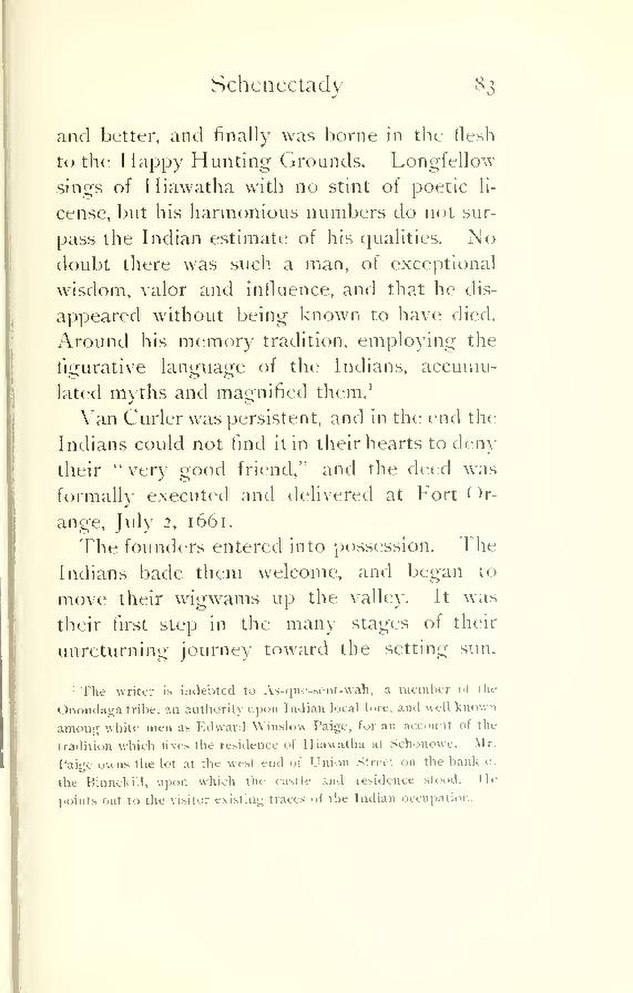and better, and finally was borne in the flesh to the Happy Hunting Grounds. Longfellow sings of Hiawatha with no stint of poetic license, but his harmonious numbers do not surpass the Indian estimate of his qualities. No doubt there was such a man, of exceptional wisdom, valor and influence, and that he disappeared without being known to have died. Around his memory tradition, employing the figurative language of the Indians, accumulated myths and magnified them.[1]
Van Curler was persistent, and in the end the Indians could not find it in their hearts to deny their "very good friend," and the deed was formally executed and delivered at Fort Orange, July 2, 1661.
The founders entered into possession. The Indians bade them welcome, and began to move their wigwams up the valley. It was their first step in the many stages of their unreturning journey toward the setting sun.
- ↑ The writer is indebted to As-que-sent-wah, a member of the Onondaga tribe, an authority upon Indian local lore, and well known among white men as Edward Winslow Paige, for an account of the tradition which fixes the residence of Hiawatha at Schonowe. Mr. Paige owns the lot at the west end of Union Street on the bank of the Binnekill, upon which the castle and residence stood. He points out to the visitor existing traces of the Indian occupation.
